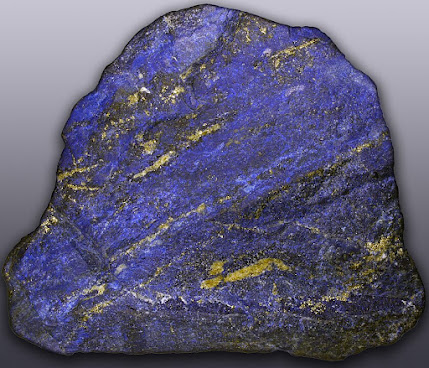The Weird History and Chemistry of Orpiment Yellow
Introduction:
Orpiment, with its radiant golden hue and rich history, stands as a testament to the enduring fascination humanity holds for pigments derived from the earth. In this exploration, we embark on a journey to uncover the allure, origins, artistic significance, and cultural symbolism of this ancient pigment that has captivated artists, alchemists, and historians alike for centuries.
Unearthing Orpiment's Origins:
Orpiment, a mineral composed of arsenic trisulfide, emerges from the depths of the earth, often found in association with other minerals in volcanic or sedimentary deposits.
The discovery of orpiment dates back to antiquity, with evidence of its use by ancient civilizations such as the Egyptians, Greeks, and Chinese, who valued it for its vibrant color and perceived mystical properties.
Mining sites in regions like Anatolia, Turkey, and the Andes Mountains of Peru reveal the significance of orpiment in shaping ancient trade routes and fostering cultural exchange. It has also been mined in Russia, Georgia, and Japan. A more recent mining location is Twin Creeks mine located in Humboldt County, Nevada. That is where the big, prismatic crystal of orpiment shown above was discovered.
The Chemistry of Color:
Orpiment's golden hue arises from the interaction of arsenic, sulfur, and other trace elements (mercury, germanium, and antimony), resulting in its distinctive coloration and luminosity. It has a pearly luster in its raw, mineral form.
It has a chemical makeup of As2S3 making it very similar to realgar. And just like realgar, it is highly toxic. Both minerals can be found together, actually.
Despite its striking beauty, orpiment poses inherent risks due to its toxicity, requiring careful handling and precautions in artistic and industrial applications. It also likes to degrade into arsenic oxides, which dissolve in water and spread all over the paintings and through the various layers. This can make them more difficult to handle and preserve. No strong lights or water-based cleaning solutions can be used around these paintings.
Orpiment in Artistic Expression:
Throughout history, orpiment has been prized as a pigment in art and decorative arts, admired for its ability to create rich, golden hues and impart a sense of opulence to artworks. It has decent lightfastness. However, it has a very big weakness where it reacts with lead and copper-based pigments. This means that lead white and verdigris green, which were very common, could not be used. That reactivity made it very easy for artists to get rid of it once synthetic pigments came about in the 1800s.
From ancient illuminated manuscripts and Byzantine icons to Renaissance paintings and Asian lacquerware, orpiment's luminous presence has left an indelible mark on the artistic landscape. However, it has notable use in Egyptian busts and scrolls. Yellow on papyrus has been found to be orpiment. The partial papyrus scroll below is from the thirteenth century BC. The bust of Queen Nefertiti has been analyzed and also contains orpiment yellow and dates back to 1351-1334 BC.
Notable artworks featuring orpiment showcase its versatility and symbolism, with its golden color often associated with themes of wealth, royalty, and divine illumination. Just like with realgar, Titian and Tintoretto were fond of using this particular yellow pigment. However, other artists with famous paintings also used orpiment. Raphael's Sistine Madonna (1512-1513) uses orpiment. Paolo Veronese's The Feast in the House of Levi from 1573 has realgar and orpiment found in the clothing of the guests featured in the large painting (measuring roughly 18.2 x 42 feet).
Historic Significance:
Orpiment holds deep symbolic meanings in diverse cultures and traditions, where it is revered as a symbol of prosperity, abundance, and spiritual enlightenment. This is tied to its names and mistaken theories as to what it was made of. The Latin name for the pigment was auripigmentum (aurum = gold, pigmentum = pigment) as it was believed to contain gold because of its rich yellow coloration.
In ancient Egypt, orpiment was found in tombs dating back to the fourteenth century B.C. and (although not written) has been found in Chinese lacquerware. It is still in use today for traditional Thai inks and paintings. Also, as mentioned before in the realgar post, orpiment and realgar was traded in the Roman empire.
The alchemical properties of orpiment also imbued it with mystical significance, leading to its use in esoteric practices and rituals aimed at spiritual transformation. It was primarily used by alchemists to try and extract gold from it due to the belief that it contained the precious element (as mentioned earlier).
Modern Usage:
Orpiment is not widely used today due to the toxicity of it. Despite that, it is till used in some limited applications. It is used to make infrared-transmitting glass, oil cloth (aka enamel cloth, pictured below), photoconductors (conductors that get better with more light/energy), and semiconductors.
It is used in the production of linoleum (everyone's favorite gas station flooring). Traditional tanning techniques still use orpiment for hair removal. That is more common in India where it is also mixed with slaked lime (or calcium hydroxide: Ca(OH)2) and is used as a depilatory or hair removal. Although, these are more common in rural areas.
Conclusion:
Orpiment's golden legacy shines as a testament to the enduring allure and complexity of ancient pigments. As we continue to unravel its mysteries and celebrate its cultural heritage, let us embrace responsible stewardship and ethical engagement with orpiment, ensuring its luminous legacy endures for generations to come.





.jpg)




.jpg)


Comments
Post a Comment